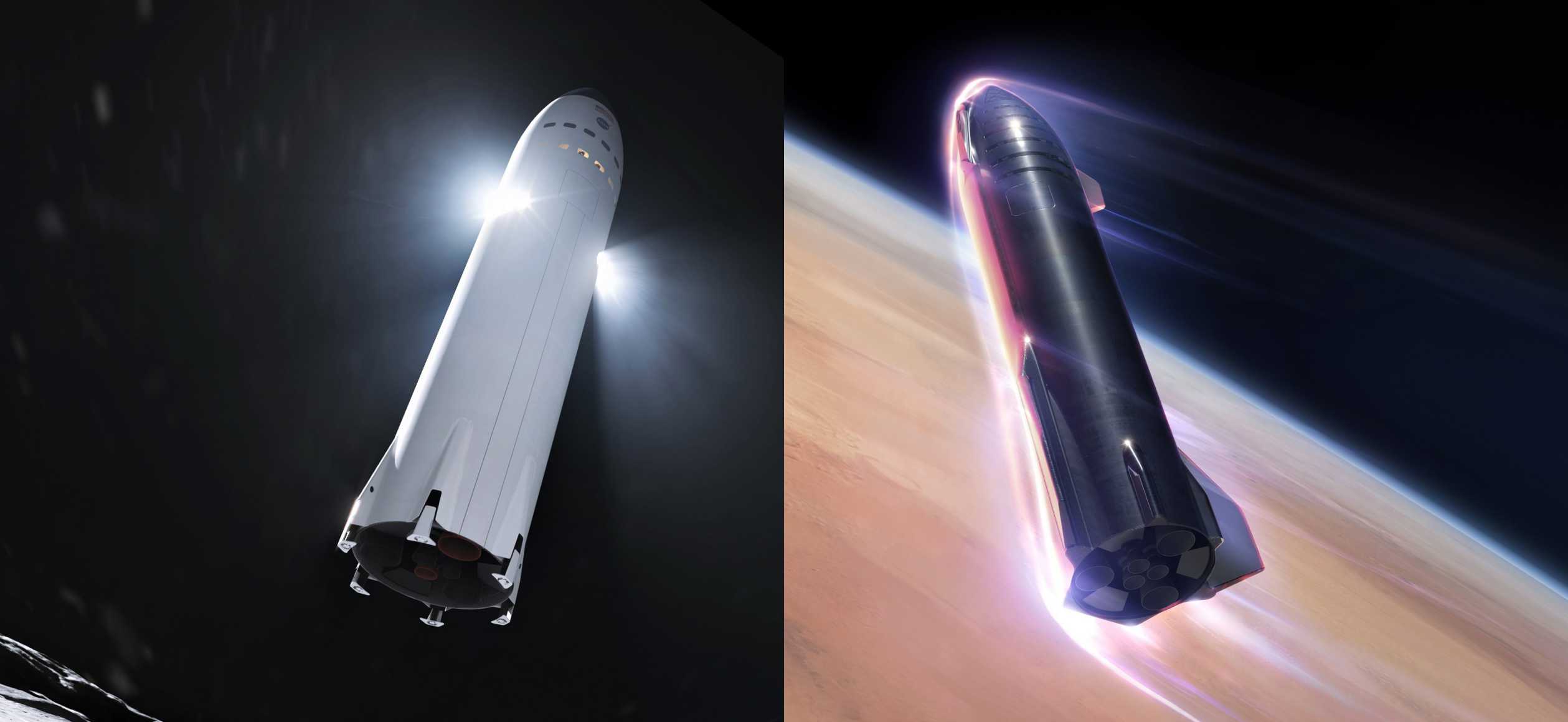
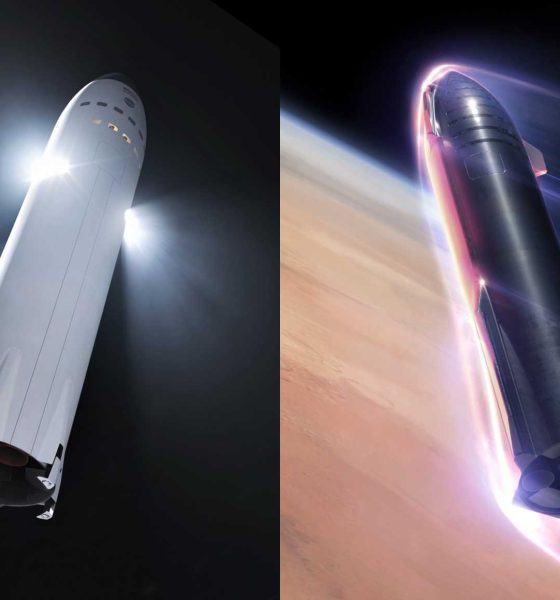
News
SpaceX’s Moon Starship is a brilliant step towards reusable Mars rockets
SpaceX’s newly-announced Moon Starship is a fairly radical departure from the Mars-focused, fully-reusable vehicle the company has been pursuing for years. Unintuitively, that may be the perfect half-step towards truly reusable Mars rockets.
On April 30th, NASA announced that SpaceX had won $135 million to design and build a highly-customized variant of its reusable Starship spacecraft with the intention of launching a handful of space agency astronauts to the Moon in the mid-2020s. Whether or not that initial seed translates into enough funding to seriously design and build the ship SpaceX has shown off in new renders, it has already broken the ice, so to speak, between the US federal government (or at least NASA) and the company’s ambitious next-generation launch vehicle.
With a substantial amount of money now on the table for SpaceX to begin initial work on its Moon Starship, it’s worth analyzing just how different it is from the Starship the company is working on today.
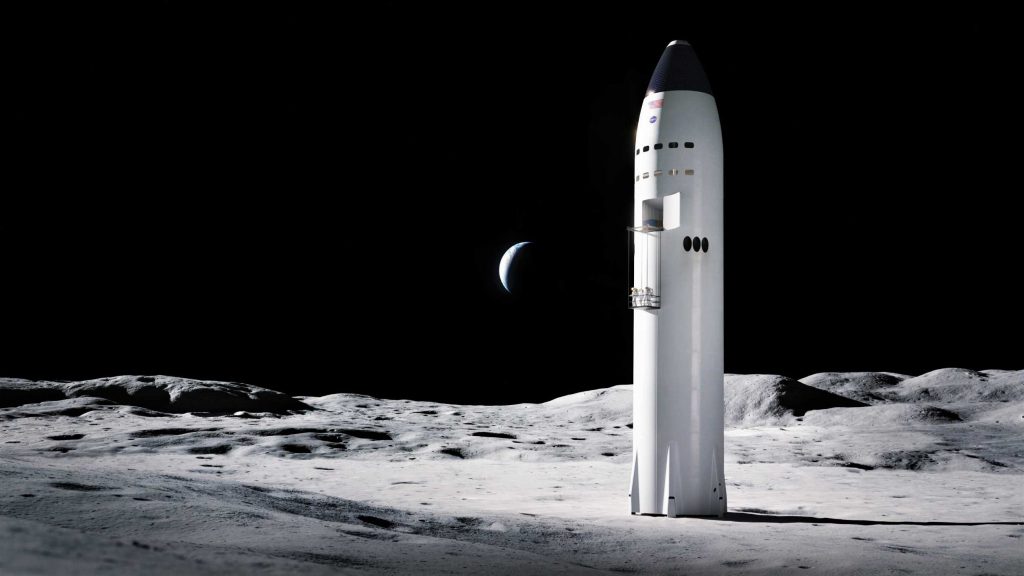
First and foremost, perhaps the most obvious difference between SpaceX’s ‘base’ Starship and its lunar variant is the rocket’s hull. In the case of the Moonbound ship, SpaceX appears to have returned to a fully-painted vehicle for unknown reasons. More likely than not, that white paint is likely motivated by the fact that proposed NASA Moon landers must (obviously) be capable of landing and safely returning their astronaut cargo back into lunar orbit.
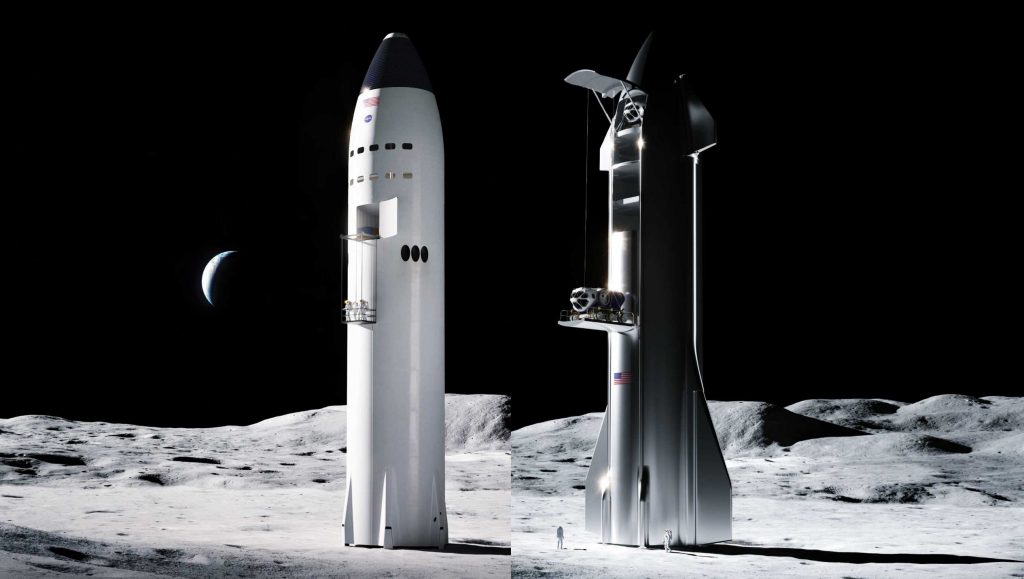
To do that, those landers must be able to sit on the surface of the Moon after landing for at least several days, with longer stays being even better. For Starship, this means that the vehicle must likely be able to keep its cryogenic liquid methane and oxygen propellant from warming up and turning into gas, thus preventing it from igniting its main Raptor engines. White paint is at least a bit more reflective (and thus insulating) compared to Starship’s shiny steel hull but it could also hint at the use of more extensive insulation then sealed off with paint.
This ties into perhaps the most significant functional change to the rocket. While visible in a render of the craft after landing on the Moon, a separate render just before touchdown fully revealed not only the addition of large vacuum-optimized retrothrusters – but a major strategic shift in how Lunar Starship will attempt to land on the Moon.
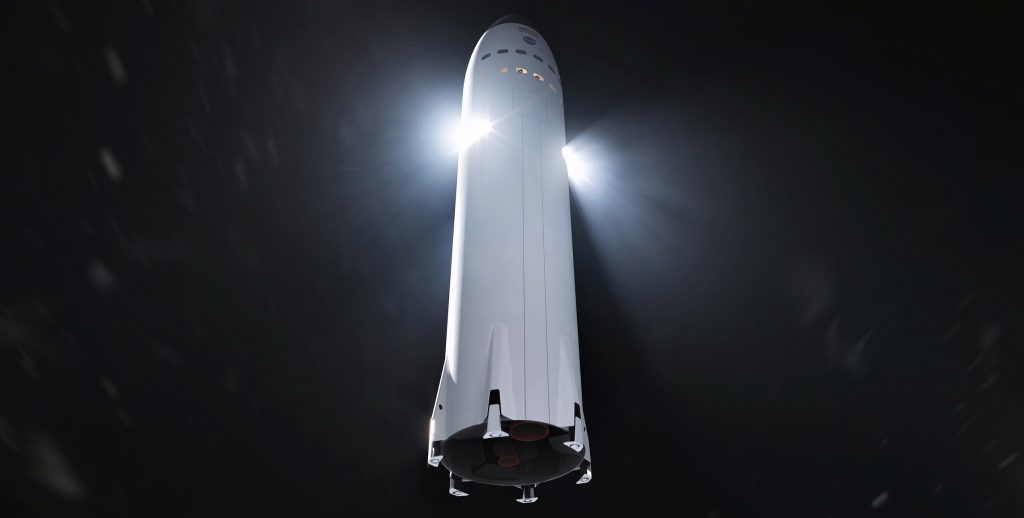
In short, it appears that SpaceX does not plan on propulsively landing Lunar Starship on the Moon under the power of its main Raptor engines. Instead, three triple-thruster clusters – likely relying on the same methane and oxygen propellant as Raptor – will fire up shortly before touchdown to gently land Starship on the Moon. This approach has significant benefits: the Moon’s gravity is so low (~1/6th of Earth’s) that using even just one engine as powerful as Raptor to land would be incredibly difficult – a single engine could theoretically lift a fully-fueled Starship thanks to low lunar gravity.
Additionally, powerful Raptor engines – even if they could be used to land – would likely dig huge craters in the Moon’s powder-like surface during a landing burn, making it more difficult astronauts to leave the ship to explore their surroundings. However, it also means that SpaceX must design and certify an entirely new kind of vacuum-optimized rocket engine – likely using gas propellant and fed by high-pressure tanks – for an extremely critical part of operations. If those landing engines were to fail, Starship would very likely crash on the Moon, marooning, wounding, or even condemning the astronauts aboard it.
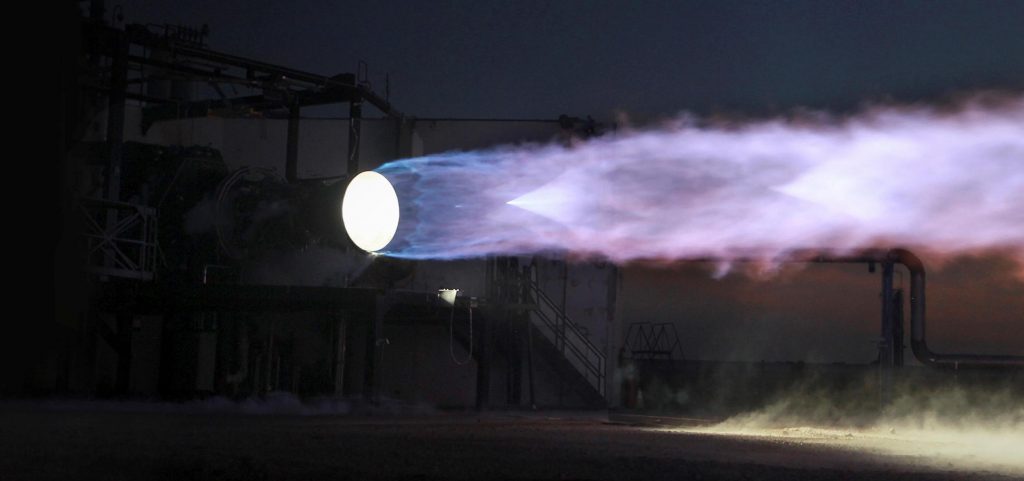
Beyond new thrusters, a radically different landing strategy, and a painted (and possibly insulated) steel hull, Lunar Starship also features what looks like the tip of a Crew Dragon spacecraft in place of its nose, likely including Draco thrusters and a docking port. SpaceX has also copied the concept of Crew Dragon’s trunk section, installing a curved solar array that wraps around a large portion of Starship’s conical nose. Lunar Starship also offers what looks like the first official glimpse into a new style of Starship landing legs, prototypes of which are already installed on Starship SN4.
Simplicity first (ish)
Additionally, SpaceX has chosen to entirely exclude a windward heat shield from Lunar Starship, as NASA’s plan is (rather painfully) to launch astronauts to the Moon with SLS and carry them to lunar orbit and back to Earth on Orion. Starship also appears to be missing its complex and extensive habitation module and massive gallery window. All that absent hardware is almost certainly meant to dramatically simplify Starship to the point that even NASA would consider funding its development. Incredibly, that strategy appears to have worked and it’s possible that we could see Lunar Starships flying to the Moon as early as 2022.
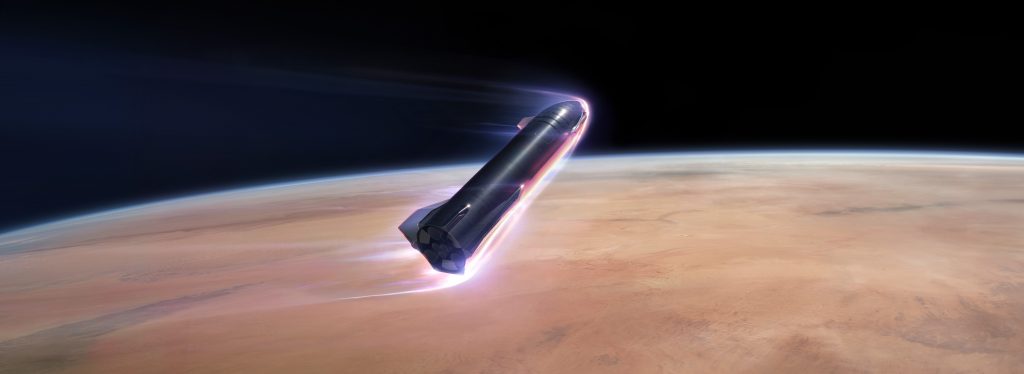
While a stop at the Moon is decidedly one-way and requires a bit of a one-off Starship variant, what SpaceX has really done is found a way to get NASA to help fund the development of its fully-reusable next-generation launch system. Even if NASA’s Artemis program dies, flounders, or goes nowhere, SpaceX will likely still benefit significantly, much in the same way that NASA’s assistance developing Cargo Dragon and Falcon 9 was a huge boon for the company.
Check out Teslarati’s Marketplace! We offer Tesla accessories, including for the Tesla Cybertruck and Tesla Model 3.

Cybertruck
Tesla Cybertruck undergoes interior mod that many owners wanted

Tesla Cybertruck is significantly different from traditional pickups on the market in a lot of ways. However, one feature that was recently modified with its interior was a highly requested characteristic that is present in other trucks, but was void from Cybertruck.
Tesla went with a five-seat configuration with Cybertruck: two in the front and three in the back. The spacious interior is matched with plenty of storage, especially up front, as a pass-through, center console, and other storage options, but some Tesla fans wanted something different: bench seating.
Bench seating is popular in many full-size pickups and allows three passengers to sit up front. The middle seat is usually accompanied by a fold-down storage unit with cupholders.
Tesla decided to opt for no bench seating up front, despite the fact that it equipped bench seating in the unveiling in 2019. Interior photos from the unveiling event from nearly six-and-a-half years ago show Tesla had originally planned to have a six-seat configuration.
This was adjusted after the company refined the design:

(Tesla Cybertruck interior configuration in 2019)
Despite Tesla abandoning this design, it does not mean owners were willing to accept it. One owner decided to modify their Tesla Cybertruck interior to equip that third seat between the driver’s and passenger’s thrones.
The fit is snug, and while it looks great, it is important to remember that this does not abide byregulations, as it would require an airbag to be technically legal. Please do not do this at home with your own Cybertruck:
- Credit: @blueskykites
- Credit: @blueskykites
- Credit: @blueskykites
The Cybertruck is a popular vehicle in terms of publicity, but its sales have been underwhelming since first delivered to customers back in 2023. It’s hard to believe it’s been out for two-and-a-half years, but despite this, Tesla has not been able to come through on its extensive order sheet.
This is mostly due to price, as Cybertruck was simply not as affordable as Tesla originally planned. Its three configurations were initially priced at $39,990, $49,990, and $69,990. At release, Cybertruck was priced above $100,000.
This priced out many of those who had placed orders, which is the main reason Cybertruck has not lived up to its expectations in terms of sales. The adjustments to the specific features, like the removal of the bench seat, likely did not impact sales as much as pricing did.
This modification shows some creativity by Tesla owners, but also shows that the Cybertruck could always be the subject of a potential refresh to include some of these features. Tesla routinely adjusts its vehicle designs every few years, so maybe the Cybertruck could get something like this if it chooses to refresh its all-electric pickup.
Elon Musk
Tesla CEO Elon Musk drops massive bomb about Cybercab
“And there is so much to this car that is not obvious on the surface,” Musk said.

Tesla CEO Elon Musk dropped a massive bomb about the Cybercab, which is the company’s fully autonomous ride-hailing vehicle that will enter production later this year.
The Cybercab was unveiled back in October 2024 at the company’s “We, Robot” event in Los Angeles, and is among the major catalysts for the company’s growth in the coming years. It is expected to push Tesla into a major growth phase, especially as the automaker is transitioning into more of an AI and Robotics company than anything else.
The Cybercab will enable completely autonomous ride-hailing for Tesla, and although its other vehicles will also be capable of this technology, the Cybercab is slightly different. It will have no steering wheel or pedals, and will allow two occupants to travel from Point A to Point B with zero responsibilities within the car.
Tesla shares epic 2025 recap video, confirms start of Cybercab production
Details on the Cybercab are pretty face value at this point: we know Tesla is enabling 1-2 passengers to ride in it at a time, and this strategy was based on statistics that show most ride-hailing trips have no more than two occupants. It will also have in-vehicle entertainment options accessible from the center touchscreen.
It will also have wireless charging capabilities, which were displayed at “We, Robot,” and there could be more features that will be highly beneficial to riders, offering a full-fledged autonomous experience.
Musk dropped a big hint that there is much more to the Cybercab than what we know, as a post on X said that “there is so much to this car that is not obvious on the surface.”
And there is so much to this car that is not obvious on the surface
— Elon Musk (@elonmusk) January 2, 2026
As the Cybercab is expected to enter production later this year, Tesla is surely going to include a handful of things they have not yet revealed to the public.
Musk seems to be indicating that some of the features will make it even more groundbreaking, and the idea is to enable a truly autonomous experience from start to finish for riders. Everything from climate control to emergency systems, and more, should be included with the car.
It seems more likely than not that Tesla will make the Cybercab its smartest vehicle so far, as if its current lineup is not already extremely intelligent, user-friendly, and intuitive.
Investor's Corner
Tesla Q4 delivery numbers are better than they initially look: analyst
The Deepwater Asset Management Managing Partner shared his thoughts in a post on his website.

Longtime Tesla analyst and Deepwater Asset Management Managing Partner Gene Munster has shared his insights on Tesla’s Q4 2025 deliveries. As per the analyst, Tesla’s numbers are actually better than they first appear.
Munster shared his thoughts in a post on his website.
Normalized December Deliveries
Munster noted that Tesla delivered 418k vehicles in the fourth quarter of 2025, slightly below Street expectations of 420k but above the whisper number of 415k. Tesla’s reported 16% year-over-year decline, compared to +7% in September, is largely distorted by the timing of the tax credit expiration, which pulled forward demand.
“Taking a step back, we believe September deliveries pulled forward approximately 55k units that would have otherwise occurred in December or March. For simplicity, we assume the entire pull-forward impacted the December quarter. Under this assumption, September growth would have been down ~5% absent the 55k pull-forward, a Deepwater estimate tied to the credit’s expiration.
“For December deliveries to have declined ~5% year over year would imply total deliveries of roughly 470k. Subtracting the 55k units pulled into September results in an implied December delivery figure of approximately 415k. The reported 418k suggests that, when normalizing for the tax credit timing, quarter-over-quarter growth has been consistently down ~5%. Importantly, this ~5% decline represents an improvement from the ~13% declines seen in both the March and June 2025 quarters.“
Tesla’s United States market share
Munster also estimated that Q4 as a whole might very well show a notable improvement in Tesla’s market share in the United States.
“Over the past couple of years, based on data from Cox Automotive, Tesla has been losing U.S. EV market share, declining to just under 50%. Based on data for October and November, Cox estimates that total U.S. EV sales were down approximately 35%, compared to Tesla’s just reported down 16% for the full quarter. For the first two months of the quarter, Cox reported Tesla market share of roughly a 65% share, up from under 50% in the September quarter.
“While this data excludes December, the quarter as a whole is likely to show a material improvement in Tesla’s U.S. EV market share.“











